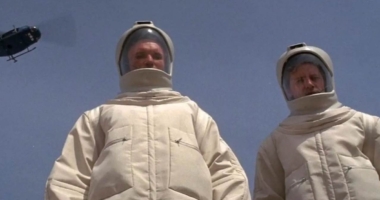On Tuesday, March 28, 2023, a rare planetary alignment will occur where Jupiter, Mercury, Venus, Uranus, and Mars will be visible together, lined up in the night sky. To view this, the ideal time is 45 minutes after sundown, making sure to have a clear view of the western horizon. With good eyesight and a clear sky, you can spot at least three of the planets without the use of binoculars or a telescope. Using binoculars, stargazers can observe Saturn’s famous rings and possibly Jupiter’s colorful cloud bands. Venus, although with no surface features visible, will display phases similar to our moon, with the phase being easy to determine with binoculars. In addition, celestial wonders such as the Pleiades and Messier 35 (M35) star clusters will also be visible. The big takeaway here is to take the opportunity to marvel at the cosmos and appreciate our small blue planet while stargazing.
On March 28, 2023, five planets, including Uranus, will form a rare planetary alignment visible in the night sky. This planetary alignment occurs when the planets involved appear to march across the sky in a straight line, and it is considered a significant event. The five planets that will align in the night sky are Jupiter, Mercury, Venus, Uranus, and Mars, making it possible to see most of the solar system in one night.
Although there have been some strange theories about the impact of planetary alignments, they have generally been debunked, and planetary alignments are considered cool to see. The last time there was an alignment featuring five planets was in 2040, making this a rare event. Usually, planets are visible at different times of the night, but if they are close enough together, they appear to be in a straight line.
To observe the alignment, one must go outside on the night of March 28 and use some tips to spot each planet. The planets will appear within 50 degrees of each other, making it a tight bunch compared to their usual spread. Venus will be up high, while Jupiter and Mercury will be down low, and Uranus and Mars will be visible between them.
In conclusion, the ultra-rare planetary alignment on March 28, 2023, provides a rare opportunity to see most of the solar system in one night. The event featuring Jupiter, Mercury, Venus, Uranus, and Mars should not be missed, as the next alignment featuring this many planets will not occur until 2040. One should step outside on the night of March 28 and use some tips to spot each planet, with Venus up high and Jupiter and Mercury down low, while Uranus and Mars will be visible between them.
On March 28, 2023, the five planets of the solar system, Jupiter, Mercury, Venus, Uranus, and Mars, will align and be visible together in the night sky. To spot this rare celestial event, one must go outside right after sunset, no more than 45 minutes after sundown, and find a clear view of the western horizon. Jupiter will be closest to the horizon, while Mercury will be nearby and visible with binoculars. Venus will be shining intensely, accompanied by Uranus just above, which will require binoculars to be seen. Mars will be up even higher in the sky near the crescent moon.
To identify the planets, look for the brightest objects that won’t twinkle like stars. With good eyesight and a clear sky, one can see at least three of the parade participants (Jupiter, Venus, and Mars), and possibly even a fourth (Mercury) with just the naked eye. However, using binoculars or a telescope will help spot all five planets.
Venus and Uranus will be visible for about three hours after sunset, while Mars will stay out past midnight. A simulation of what one might see looking west from Los Angeles at approximately 8:30 p.m. PDT and 11 p.m. PDT is available, showing Venus as the brightest object, followed by Jupiter and Mars, while Uranus will be more challenging to find.
This rare planetary alignment is an excellent opportunity to see most of the solar system in one night and is worth stepping outside for.
Using a decently sized pair of binoculars or a telescope while watching the rare planetary alignment of Jupiter, Mercury, Venus, Uranus, and Mars on March 28, 2023, will offer stargazers an opportunity to see an array of neat planetary features. Saturn’s famous rings and Jupiter’s colorful cloud bands are some of the features visible. Although Venus’s surface features are not visible, one can determine what phase it’s in, similar to our moon. It’s essential to have clear, still skies while observing overhead, as viewing surface details on the planets close to the horizon becomes more difficult due to looking through more of Earth’s atmosphere.
Apart from the planets, there are other celestial wonders worth observing. The Pleiades, a star cluster known as the seven sisters, shines between Venus and Mars, and a large open cluster of stars, Messier 35 (M35), is visible near Mars. Even in big cities like Los Angeles, the Pleiades can be seen with just the naked eye. On the other hand, observing M35 requires binoculars, and it’s better to observe it from remote dark sky locations.
Additionally, Earth’s moon, a beautiful waning crescent, can be observed using a pair of binoculars. The moon’s many craters are visible in detail through binoculars. Bentley explains that both M35 and the Pleiades are examples of stars all born around the same time from the same initial cloud of gas.
In summary, observing the rare planetary alignment of the five planets on March 28, 2023, is an excellent opportunity to marvel at the cosmos and appreciate our small blue planet while looking for other worlds. Happy stargazing!
Don’t miss interesting posts on Famousbio








